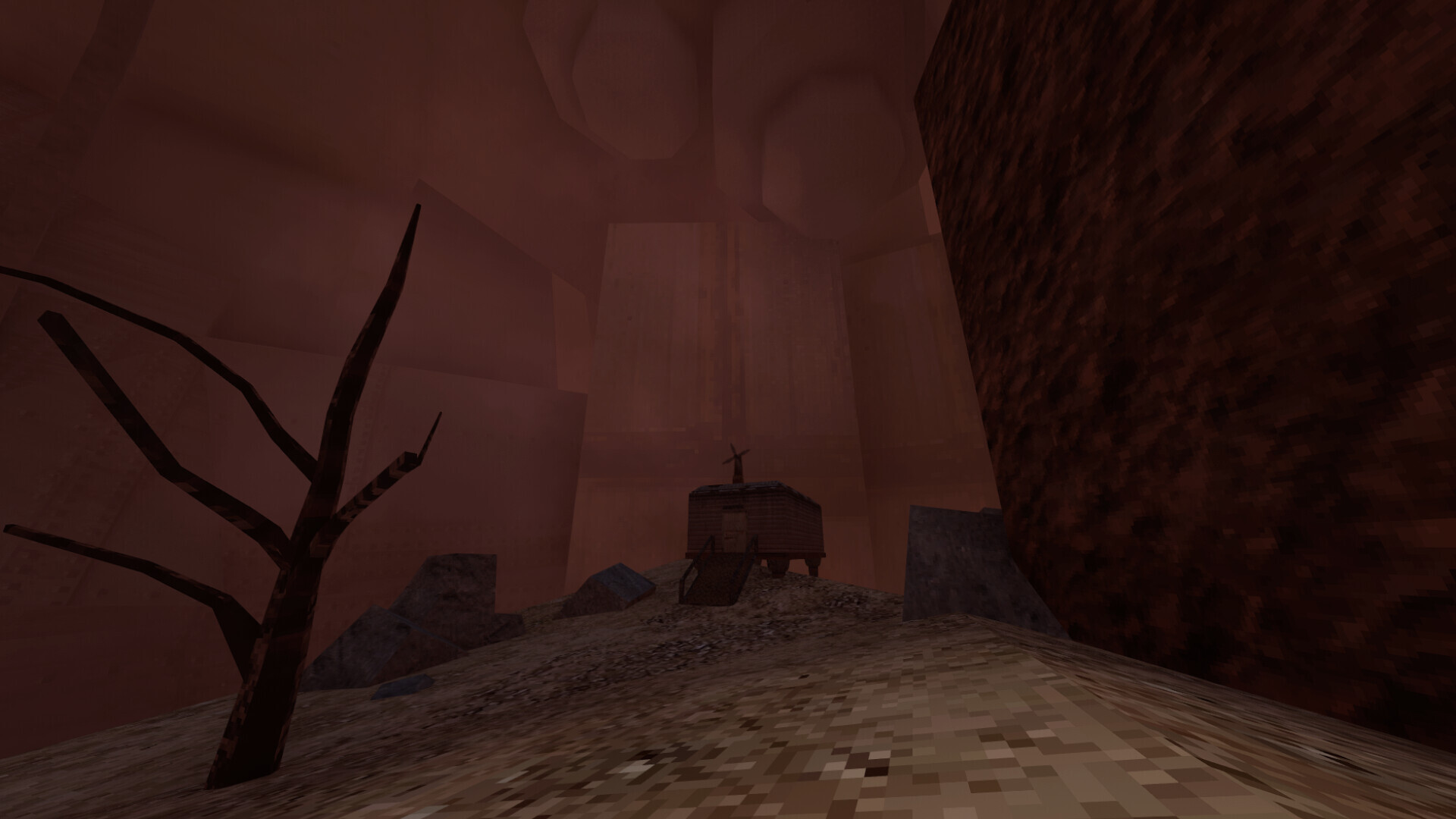Lorn’s Lure, a first-person indie platformer released this year from Rubeki Games, is downright terrifying. The terror isn’t in its science fiction plot, which follows an android who leaves the safety of his home colony to chase down a mysterious floating light, taking him deep into the astonishing depths of an unknown superstructure. Over the course of eight levels the android makes his way through cavernous spaces, down city-sized canals, into dark caves and among the ruins of ancient, long-dead civilizations. The impressive topography and impossible scale of Lorn’s Lure inspires awe. It is in traversing these spaces, in carefully flinging your intrepid artificial body across its antagonistic architecture, that you will feel the terror.
The first few levels of Lorn’s Lure follow your android as he leaves the safety of his colony – cocooned and ignorant of the rest of the superstructure of which it is an infinitesimally small part – and inching his way across narrow walkways, suspended above fathomless depths. Soon, though, the environment of the horror game contracts and you’ll find yourself crawling through confusing, pitch black caves, your only light source the measly glow of flares you can toss out into the near-empty nothingness. Through gaps in the cave floor, a river of black sludge rushes by; through the cave’s walls, hidden voices seem to whisper.

Horror fiction tends to work by making monsters out of the raw material of the unknown. It gives shape to the void, lending it teeth and claws. Lorn’s Lure doesn’t need to create a monster, to chase your android through its levels (though there are several memorable moments when your character is harried by time-limiting environmental threats). In Lorn’s Lure, everything, apart from the narrow piece of rebar keeping you alive and not pancaked thousands of feet below, represents your death; the whole world is the monster. Gravity, which normally provides a sense of comfort, keeping your feet planted firmly on the ground, here morphs into threat, a cloying force threatening to drag you toward your end.
Many of us have had some version of this moment: snuck out for a smoke on the fire escape or balcony of someone’s apartment party, or peering out over the edge of a poorly secured rooftop, or leaning over the railing of a suspension bridge hung high over turbulent waters. You take in your great height, and wonder what it might actually feel like to fall, the wind whistling past as your vision tunnels and your heart hammers. Or maybe you’ve hiked a steep trail and leapt across the gap between boulders, picturing, all the while, the possibility of not making it, of lying broken and splayed along the rocky ground below.
It’s human to fantasize about these frightening visions, to wonder about what it would mean to ignore our ingrained survival instincts and take impossible and death-defying leaps of faith. Lorn’s Lure allows us to explore this twisted fantasy, lets us feel the threat – feel the boundary – and imagine what slipping beyond it might mean. It shares this in common with other staples of the horror genre, like the slasher, which lets audiences explore the sadomasochistic give and take of the hunter and the hunted, or the ghost story, which allows us to plumb our fears of the invisible, making real the imagined source of that odd bump that sounds on an otherwise silent night.
And, like these examples – which let us process and exorcize dark slivers of our psyches, these self-destructive counter instincts; which allow us to inhabit the frail form of the final girl, or the hapless victim of a hatchet or meat hook, or even the mask-wearing lunatic himself – Lorn’s Lure gives us license to embrace our vertiginous-bound fears, to experience the terror of falling, over and over and over again. Each new area in the game adds yet another facet to the richness of the terror, another way the environment may challenge you to overcome it, another ratcheting up of the danger to your delicate little form, as you navigate mammoth and uncaring architecture.
Each new spatial platforming puzzle lets you relive, over and over, the grim prospect of failure, of mistiming your leap, of tripping clumsily over a low wall, of missing a grapple, your fingers sliding off the ledge, followed by the inevitable precipitous drop, then the black screen and a prompt to reset, a chance to experience the terror of trying it all over again.
After countless attempts, you make the landing. You teeter on the flimsy crag on the otherwise smooth surface, on the pipe jutting out over the dark void, the edge of your foot making tenuous contact, gripping, and, thankfully, holding firm. You stay there, not daring to breathe. An inch in any direction might trip you up, might knock you from your fragile perch and send you tumbling down once again into the abyss. You creep forward and find more solid ground; a moment of respite, before you must push onward, heading down, descending deeper and facing greater dangers. There’s a panic in knowing that you’ll be pushed past your limits and find new depths of terror. There’s also an unexplainable compulsion to keep crawling towards the nightmare, to face it, and find a way to survive.














Leave a Reply